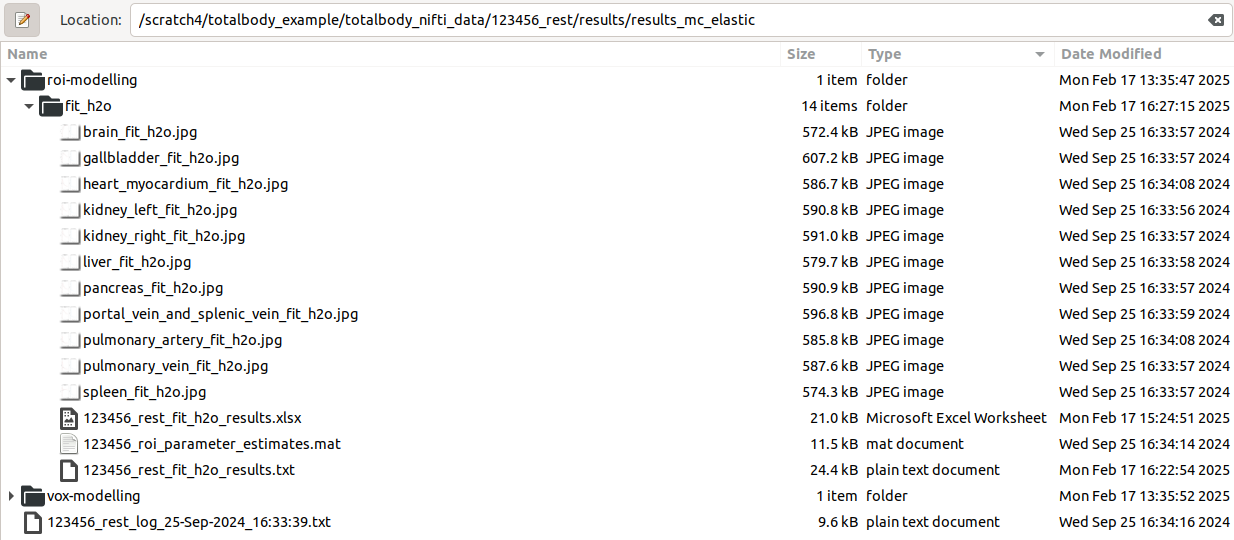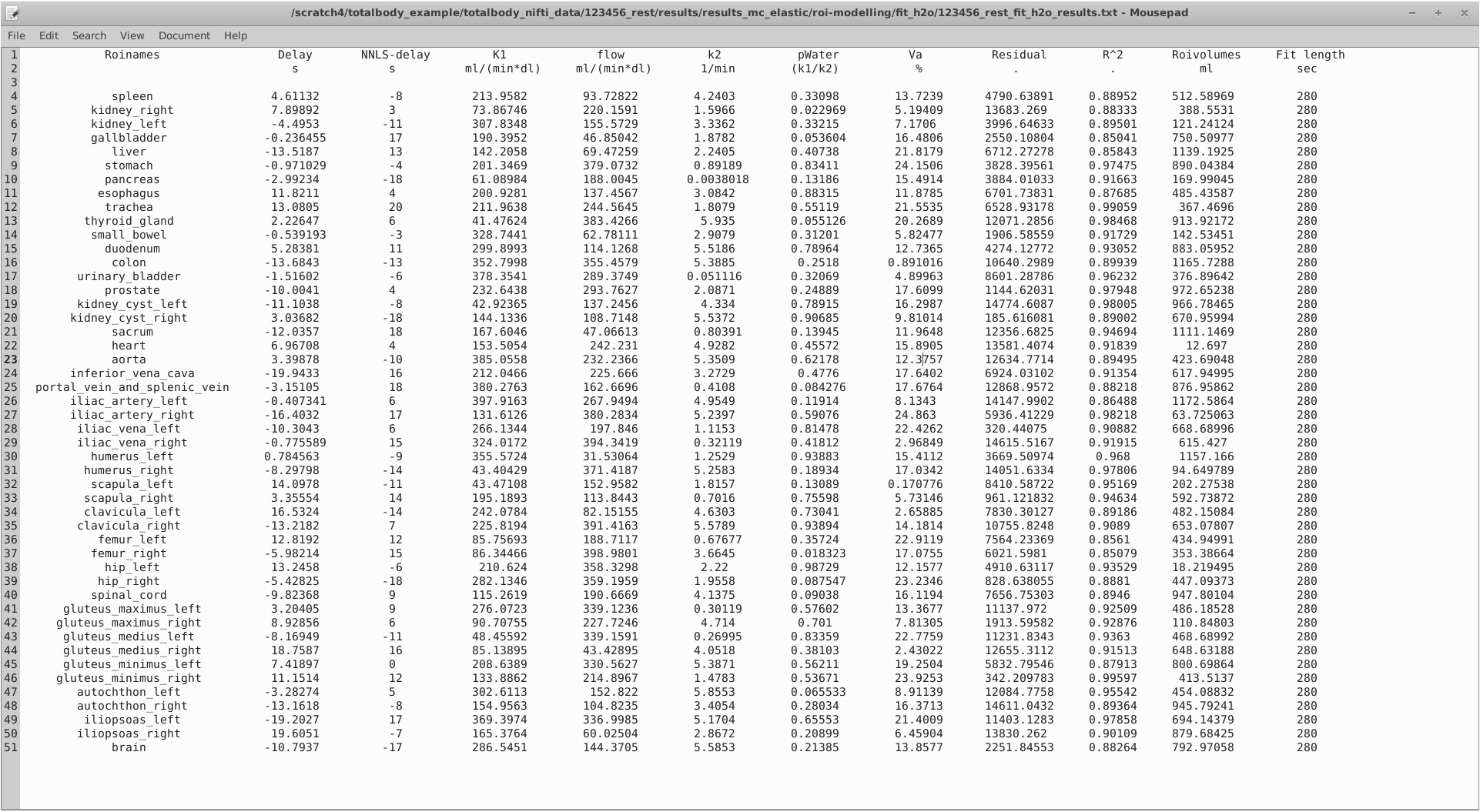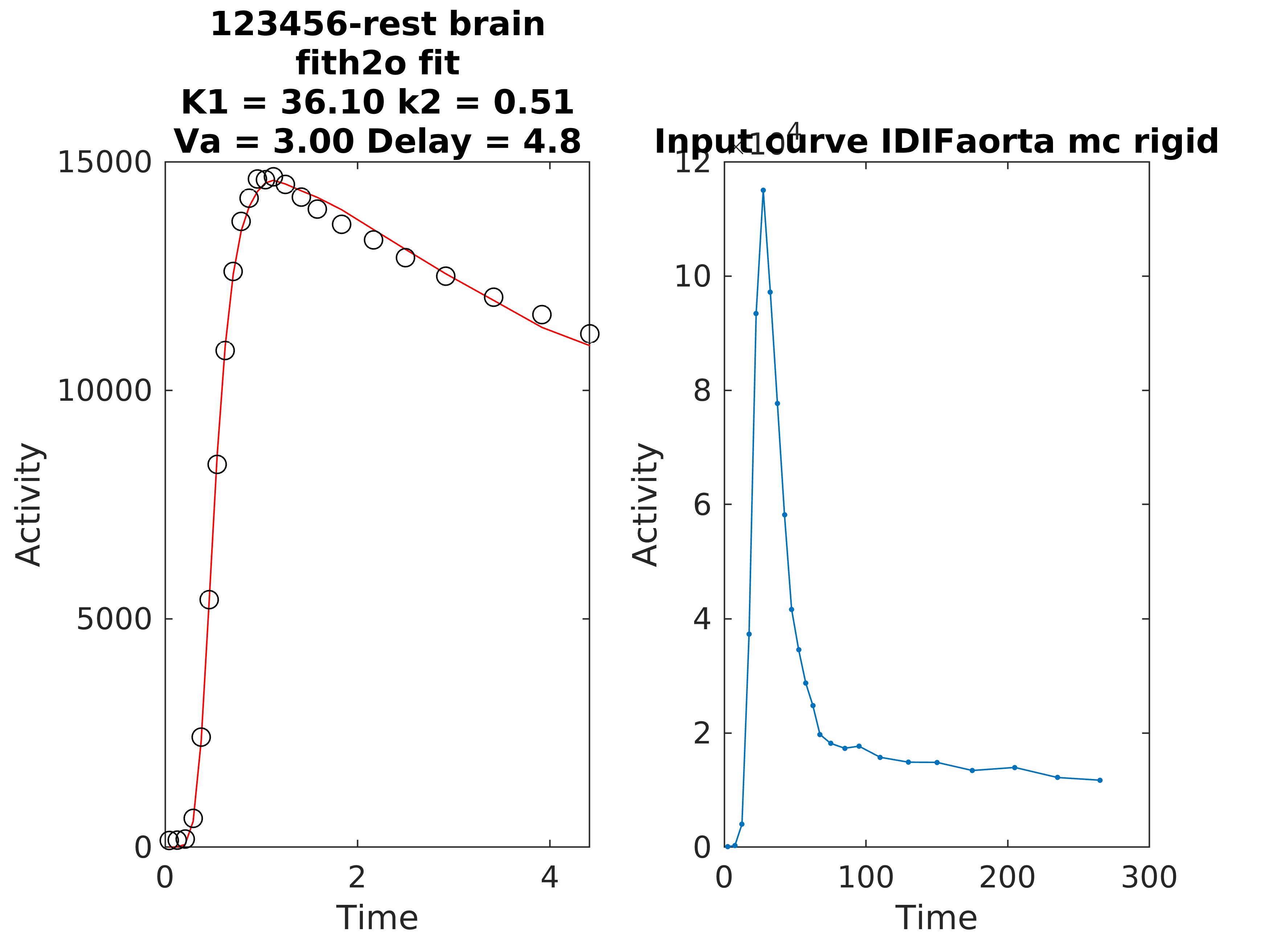Results#
Folder structure#
Results of Turbo analysis are put to the following path:
The next folder names depend on the specified options. The next folders are some of these three:
results_no_mc
results_mc_rigid
results_mc_elastic

The names correspond to what kind of motion correction was used for the results.
Note
All of these result folders are not always created. For example results_no_mc can be missing if motion correction was used.
Folders results_mc_elastic and results_no_mc are similar, under these folders the next folders are the used models (usually just one but can be multiple).

These contain the modelling results and parametric images divided to model specific folders. The ROI-results are saved in three formats:
Text-file
Excel-file
Matlab mat-file
All these contain the same data. There are also mean ROI curve fits as image files (not for suv). Some ROIs are omitted from the image to make it more clear. Presented data is random numbers just to showcase the format.



Gathering results automatically#
Results can be viewed individually or compiled automatically. Results of multiple subject can be easily fetched with three different functions:
Each of these function return the results in a matrix and a table, roinames used in the modelling and parameter names.
The following line gives all ROI-level results that are found for two subjects (123456_rest and 67891011_rest).
[roi_results_matrix, roi_results_table, roinames, roi_param_names]
= turbo_compile_roi_results(
["123456_rest"; "7891011_rest"],
'fit_h2o',
'no_mc',
result_xlsx = '/path/to/results.xlsx');
The first argument is list of subjects, second argument is the used model and third one is either 'no_mc' or 'mc_elastic' depending on if motion correction was used or not. The last name-value argument is a path where the compiled results are saved as excel. This can be omitted and by default no xlsx file is saved. The roi_results_matrix and roi_results_table contain the same information.
To get voxel-level results:
[vox_results_matrix, vox_results_table, vox_roinames, vox_param_names]
= turbo_compile_vox_results( ...
["123456_rest"; "7891011_rest"], ...
'imgh2o', ...
'no_mc', ...
vox_result_xlsx = '/path/to/vox_results.xlsx');
And Magia-results:
[magia_results_matrix, magia_results_table, magia_roinames, magia_param_names]
= turbo_compile_magia_results( ...
["123456_rest"; "7891011_rest"], ...
'fit_h2o', ...
options);
The results are in matrix format in variable roi_results_matrix (for voxel-level and Magia-results too). The matrix is of form NxRxP where
N is the amount of subjects
R is the amount of ROIs
P is the amount of parameters.
To get all results from the first subject:
% Remove the dimension that has length of 1 with squeeze.
subject1_results = squeeze(roi_results_matrix(1, :, :))
This gives a 2D array where rows are ROIs and columns are the values of one parameter. So to get all modelling results for the brain of the first subject in list, we type:
% Find the brain index.
brain_idx = find(strcmp(roinames, ‘brain’));
subject1_brain_results = roi_results_matrix(1, brain_idx, :))
% Example output, data is not real. These correspond to param_names variable. e.g. subject1_brain_results(1) is the value of parameter roi_param_names{1}.
% [ 5.8209974429768
% 1
% 37.0345531316796
% 36.0034566360885
% 0.46836720627207
% 0.710066475046254
% 3.45774561554533
% 3572.53223605303
% 0.999010882913564
% 1546.57714242981
% 280 ]
Note
All of the results must be in uniform format, i.e. you can only fetch one type of results at one time, for example ‘fit_h2o’. To fetch another model results, run turbo_compile_results again with new inputs. All the results must also contain the same amount of ROIs in the same order.
You can also get the result files of one subject using turbo_get_results. This returns the result matrix and filepaths to .mat, .txt and .xlsx files. Using the turbo_compile_roi_results turbo_compile_vox_results and turbo_compile_magia_results is still preferred.
[results_mc_elastic, vox_results_mc_elastic, results_no_mc, vox_results_no_mc, results_magia]
= turbo_get_results(subject, 'fit_h2o', 'imgh2o');
All the returned variables are 4x1 cell arrays, where
1st entry is a Matlab table containing the results.
2nd entry is the full filepath to the .mat-file that contains the results (the returned table is read from this file).
3rd entry is the full file path to the .txt-file containing the same information as in the table.
4th entry is the full file path to the .xlsx-file containing the same information as in the table.
If any of these files are not found, then an empty array is returned instead.
